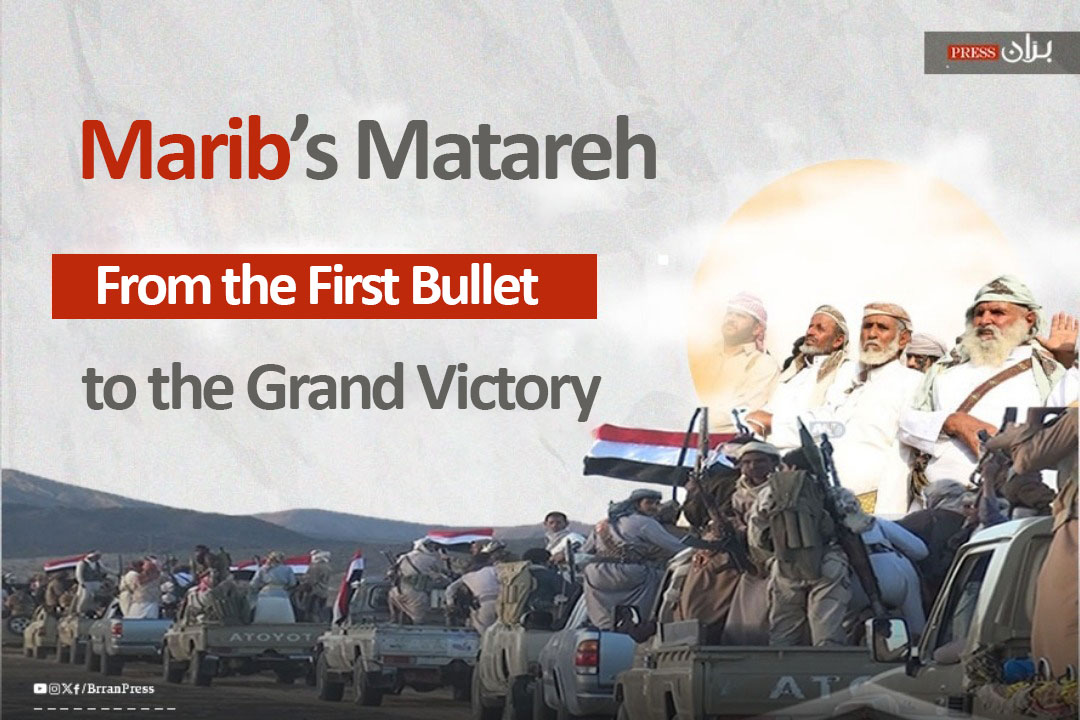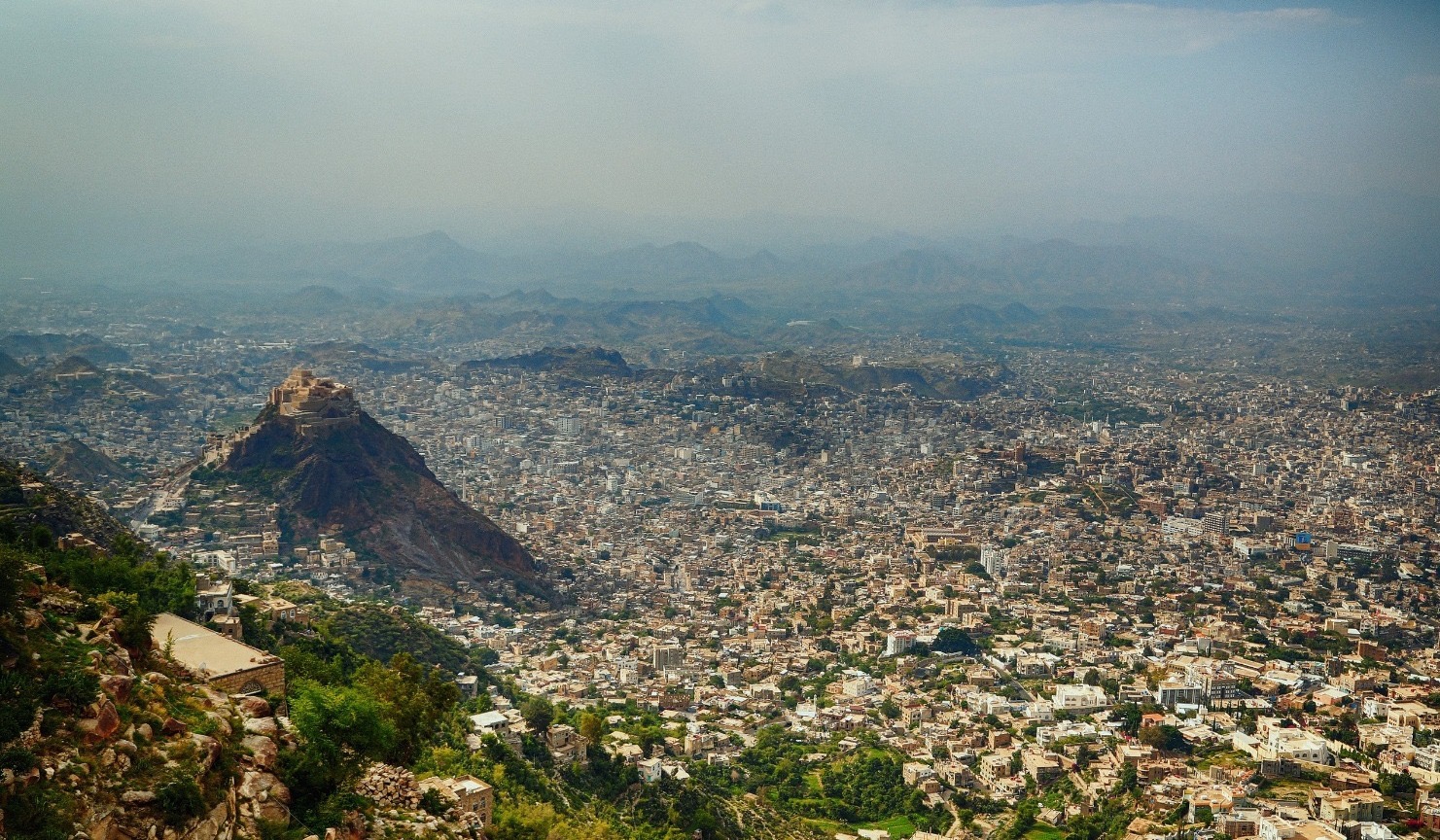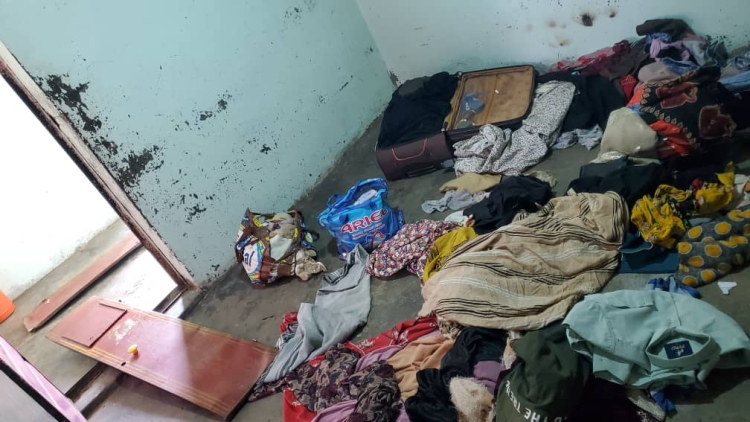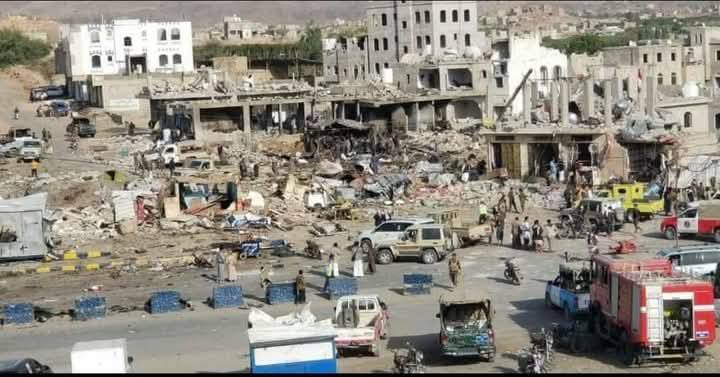
Bran Press - Walid Al-Rajihi
The term "Matareh" was not prevalent in Yemen, at least not in recent decades since the establishment of the republic. It resurfaced and gained widespread use in September 2014, when the tribes of Marib mobilized to the northern, western, and southern outskirts to confront the Houthi militia attempting to seize control of the governorate.
This Barran Press article sheds light on "Matareh Marib," its contexts, events, and daily life, from the first shot fired against the Houthi militia, which began its attempts to infiltrate the oil-rich governorate in 2011, until the beginning of its expulsion in late 2015.
What is the Matrah (Matareh)?
In Arabic, Matareh is the plural of "Matrah," which refers to a place far from one's home.
In the tribal context, Matareh signifies a temporary location where people gather in response to a tribal call, for mediation in disputes or conflicts, or to defend against a looming threat or attack.
The Matareh in Marib emerged as a necessary defensive measure against the aggression of the Houthi militia, internationally classified as a terrorist group, and its escalating advance towards Marib governorate with the aim of seizing control and accessing its oil and gas resources.
The militia had attempted to breach the governorate starting from the Jid’an area in the northwest, with attempts dating back to 2011.
The first organized tribal Matrah was established a day after the Houthis broke an agreement signed with the tribes on September 17, 2014. This agreement stipulated the militia's withdrawal from the areas they had infiltrated and their return to Safra area, while the tribes of Marib would return to their areas, ending the war in the Jid’an regions.
Following the militia's violation of the agreement, the tribes converged on the areas of Nakhla and Saheel on September 18, 2014. Subsequently, the Matareh expanded to the west and south of the governorate as the Houthi attack escalated.
A War for Peace
"We did not go to Matareh for war, but for peace. Peace can only be achieved by repelling the invading militias that bring destruction with them," I vividly remember Sheikh Saeed bin Quraih saying during a conversation with us while visiting the Matareh with a group of journalists.
This was not just Sheikh Saeed bin Quraih's reasoning but a deeply rooted culture shared by all those we met while covering the events of Matareh and gathering opinions from tribal sheikhs and their stances on the ongoing events in the country.
I still recall the late Sheikh Abdullah bin Hamad bin Gharib, the tribal reference of the Matareh, who joined the Matareh with over 10 of his sons and grandchildren.
On the first day, Sheikh Hamad bin Waheet was the first spokesperson for Matareh, surrounded by his family members, all adorned with weapons, in the Matareh of Nakhla. This was the case for dozens of tribesmen who rushed to these Matareh, accompanied by their sons and grandchildren.
Most of those we met throughout the Matareh period sought the state and emphasized their refusal to submit to any authority other than that of the state. They affirmed their determination to confront any group seeking to seize control of the governorate by force, no matter the cost.
The state was present in the minds of the tribesmen scattered across the Matareh of Nakhla and Saheel. Sheikh Saleh Lanjaf said, "We are with the legitimacy, and we will not deviate from it. We only seek the state."
The Pre-Battle Matareh
Since the beginning of July 2014, following the Houthis' takeover of Amran, the group began encroaching on Marib province from the Safara region, which they had seized in 2011 with the complicity of then-army forces, according to tribal and military sources.
Ever since, the tribal areas in the northwest of Marib province have witnessed bloody events and confrontations, claiming the lives of many of Marib's finest tribal men.
Safara, a region belonging to the Majzar district in northwest Marib and extending into the Al Jawf province, held significant strategic and ideological importance for the Houthis. It served as their first base of operations after expanding from Saada province, following six rounds of rebellions against the state between 2004 and 2010.
Tribal fighters initially resisted the Houthis' attempts to seize Safara. After liberating it, they handed it over to the army forces, only for the Houthis to regain control.
Since 2011, Safara has remained a launchpad for Houthi attacks on Al Jawf and Marib provinces. It serves as a border region connecting these provinces to Sana'a, forming a strategic triangle used by the Houthis to kidnap and harass tribesmen.
In July of the same year, the Houthis launched major offensives to seize the districts of Jid'an (Majzar, Madghal, Raghwan). Tribal fighters fiercely defended their territories for over a month and a half.
A presidential committee failed to broker a ceasefire, and its head, Mohammed Dara'an, returned without convincing the Houthis to end the war, according to tribal and informed sources.
The fighting later extended to the Al Jawf junction, then to the areas of Al Hrisha, Wadi Al Jafra, and Al Khaneq, continuing until September 17, 2014. A temporary ceasefire was achieved after the Houthis signed an agreement with the tribesmen, only to break it the following day.
This prompted the tribes of Marib to mobilize in large numbers at the "matareh" (camps) starting on September 18, 2014. They prepared for a decisive battle against the Houthis, before the arrival of reinforcements from across Yemen and the intervention of the Arab coalition to support the legitimate Yemeni government against the Houthi coup. The battle continues to this day.
The Expansion of the Matareh
As part of their defensive arrangements, the tribes of Marib spread out across numerous matareh on the outskirts of the province in all directions, as needed to repel the Houthis' expansionist attacks.
In southern Marib, the "Washha’" camps were established on January 29, 2015. The tribes showcased their forces, declaring a mobilization to counter any Houthi attack from the south.
At the beginning of February 2015, the Bani Dhabyan tribes established their Matrah in the "Hisn Matwal" area west of Marib. They signed a document with other tribes to stand against the Houthi militia.
On March 12, the Murad tribes established their Matrah in the "Najd Al Majma'a" area south of Marib. The Jahm tribes established their Matrah in the west.
Meanwhile, the Abdiyah and Hareeb tribes were deployed along the border areas, watching for any Houthi movements. Many of their members also participated in other Matareh.
No single Marib tribe established a Matrah on its own. The mobilization was a collective effort, although the location of the Matareh might be associated with a specific tribe. All of Marib's tribes, including Murad, Abidah, Jahm, Jid'an, and others, were present in the Matareh.
The First Camps
The "Nakhla" Matrah was the first organized and permanent tribal camp, the largest and longest-lasting. The Houthis relentlessly sought to reach it and overcome the tribal defensive fortifications, recognizing its symbolic significance in the resistance and resilience. Since its establishment, it has witnessed expansion, and tribesmen have remained stationed there until the beginning of February 2015.
From the beginning, tribal fighters set up dozens of tents along the Nakhla and Saheel areas. They deployed across various locations, divided into sectors, protection teams, patrols, and reconnaissance units. Every evening, they assumed a combat-ready posture, anticipating any hostile attack.
It was customary for those joining the Matareh to bring their weapons, ammunition, and necessary supplies for survival, endurance, and resilience against threats.
The Matareh hosted events and activities at the sector level. The tribes regularly conducted parades showcasing their personnel and weaponry.
The Matareh witnessed numerous military displays by tribal fighters, including parades featuring vehicles and medium-caliber weapons. Armed tribesmen, adorned with the national flag, also participated in these displays.
These parades were accompanied by traditional chants and songs, expressing strength, power, defiance, and determination to prevent any militia from entering the province.
Daily, the tribal fighters in the Matareh trained and prepared for battle, engaging in shooting exercises, the use of medium-caliber weapons, and other tasks. The risks escalated over time.
The tribes had sensed the danger early on and realized that they were facing an inevitable war. This required them to enhance their readiness, preparedness, and organizational structure for the Matareh .
Choosing Leadership
The Marib’s Matareh, a symbol of resistance against the Houthi insurgency, emerged as a testament to the resilience and unity of Yemeni tribes. Following the decision to establish these Matareh , the tribes immediately set about choosing their leaders. Through free and direct voting, they elected Sheikh Abdullah bin Hamad bin Jaradan (40 years old), later martyred, as the commander of the Matareh , and Sheikh Mohsen al-Ghuwaibi, also martyred, as his deputy. The revered elder, Sheikh Abdullah bin Hamad bin Gharib, was chosen as the tribal authority of the Matareh.
With the leadership established, preparations for organizing the camps began in earnest. A team for moral guidance and a media team were appointed to cover the Matareh ' activities and announce their stances. The geographical area was divided into sectors, each with a designated territory and direction.
To streamline the organization of personnel and their deployment, the men were divided into six combat battalions, each led by a respected figure: Sheikh Mohammed bin Hassan al-Arada (martyred), Sheikh Awad bin Saleh bin Mu'alli (martyred), Sheikh Saeed Quraih, Sheikh Salem Samran, Sheikh Saleh bin Salem bin Jaber (martyred), and Sheikh Hassan bin Ali bin Shabana (martyred).
A Covenant of Loyalty
Prior to any practical arrangements, the tribes pledged an oath to never leave the Matareh under any circumstances. They left behind their businesses, farms, and personal interests, embracing the hardships of the camps to confront the escalating Houthi threat.
Throughout their stay, the tribes focused on developing their defensive and offensive skills. The tribesmen received training in defense tactics and honed their offensive capabilities. The Matareh buzzed with activity, hosting weapon handling and maintenance workshops, evening sessions, moral guidance sessions, and visits between sectors. Councils were held to analyze the situation, discuss developments, and formulate decisions.
A New Phase: From Defense to Offense
The Matareh's activities were not limited to defense. They transitioned to an offensive phase, aiming to drive the Houthi militia out of the areas they had seized.
On March 19, 2015, the first live-fire maneuver and site capture was executed, marking the shift from defense to offense. The late Commander of the Matareh , Abdullah Jaradan, confirmed this transition, stating that the maneuver was a step from defensive training to offensive training, part of the preparation to repel the Houthis.
The tribes closely monitored developments in Yemen and the media coverage surrounding them. The "Resistance Newspaper" was published, exceeding 30 issues, providing clarifications, responses, and statements.
The tribesmen's focus wasn't solely on Marib. They actively engaged with national issues, issuing over 30 statements outlining their stances on local and national matters, refuting rumors and lies spread by the militia.
Meetings and Communication
The tribes in the Matareh actively fostered communication with all segments of society, strengthening internal unity through consultative meetings. The Saheel region, encompassing the Matareh , became a hub for tribal conferences and receptions for tribal, political, and military leaders.
A large-scale consultative meeting was held to discuss the Houthi attacks on the tribes of Jawf and Al-Jid’an, who were engaged in a defensive war against the Houthi militia. Tribes from Jahm, Abidah, Al-Jid’an, and others held numerous meetings in the Saheel’s Matareh .
The tribes called for a general meeting of the tribes of the Saba region, which was held in Marib on August 27, 2014.
Welcoming Delegations
Shortly after their establishment, the Matareh became a destination for visiting delegations from Marib and neighboring governorates, attracting tribal, political, and military leaders.
The Matareh received delegations from the tribes of Marib, who arrived in succession, as well as delegations from other tribes, including the Dham tribes in Jawf, the tribes of Al-Bayda, the tribes of Shabwa, and prominent sheikhs who had fled Sana'a after the Houthi takeover.
The camps also welcomed numerous local and international press delegations and media outlets.
Support and Backing
When the Houthi attack on Marib began from the southern border with Al-Bayda governorate on March 19, 2015, the Matareh promptly provided support to the Qaniya front, followed by reinforcement of the Hareeb front, which the Houthis attacked after their invasion of Shabwa governorate. Later, they supported the Bayhan front in western Shabwa.
After the Houthi invasion of Shabwa, the Matareh deployed dozens of their members to protect the Safer facilities and prevent the militia from reaching them.
Thus, the Marib Matareh became a beacon for Yemenis who opposed the Houthi coup, attracting people from all governorates. They served as the nucleus of the national resistance and a starting point for rebuilding and rehabilitating the armed forces.
Chronicle of Events in the Marib Camps
August 21, 2014: A consultative meeting was held to discuss strategies for repelling aggression in Al-Jawf and Al-Jid’an, rejecting armed militia activities.
August 27, 2014: Tribal leaders from the Saba region convened to deliberate defensive measures.
September 10, 2014: The Murad tribe organized a consultative meeting to strategize against militia threats.
September 11, 2014: Tribes sent reinforcements to support the ongoing battles in Al-Jid’an and Al-Jawf.
September 15, 2014: Amid ongoing conflicts, tribes sent a letter to the UN envoy warning of the militia's dangerous expansion and requesting a visit to Marib and the Matareh.
September 17, 2014: A tribal mediation succeeded in reaching an agreement to end hostilities, leading to the Houthis' withdrawal from Al-Jid’an, though they attempted to advance shortly after.
September 18, 2014: The establishment of the Nakhla’s Matareh was officially announced.
September 25, 2014: Tribes issued a statement condemning media attempts to sow discord between tribal factions and military institutions.
September 2014: Tribes declared a cessation of all tribal vendettas and announced a general reconciliation to unite against the encroaching threat.
November 8, 2014: A statement was released reiterating the tribes' rejection of any militia interventions under any pretext, pledging to resist any aggressor attempting to enter the province unlawfully.
November 8, 2014: Tribes sent a letter to the President, urging military and security forces to fulfill their responsibilities in protecting the province from militia incursions.
November 11, 2014: The President replied, placing responsibility for the province's security on the Marib governor and military commander.
November 13, 2014: The Murad tribes condemned the Houthi mobilization against Marib and the seizure of the homes of Marib and Al-Jawf governors in Sana'a.
November 19, 2014: Tribes denounced media campaigns against Marib, reaffirming their steadfast stance against terrorism and sabotage.
November 20, 2014: A tribal meeting was held, featuring a military display, where they condemned Houthi threats and illegal appointments of governors for Amran and Hodeidah.
January 2015: The leadership of the Third Military Region called for the return of military forces stationed at the Al-Jawf intersection to prevent Houthi control.
January 10, 2015: A statement condemned Houthi accusations against Marib residents regarding oil tanker attacks.
January 17, 2015: The tribes issued a statement condemning the Houthi abduction of the Director of the Presidential Office and Secretary-General of the National Dialogue Conference, Ahmed bin Mubarak.
January 11, 2015: Tribes welcomed a governmental decision to form a committee to address issues in Marib and Al-Jawf.
February 8, 2015: A statement rejected the Houthi announcement abolishing the constitution and dissolving the parliament, reaffirming support for legitimacy based on the Gulf Initiative and National Dialogue outcomes.
April 13, 2015: Tribes welcomed the appointment of Khaled Bahah as Vice President and Prime Minister.
April 29, 2015: A statement was issued to deny Houthi rumors, reaffirming their commitment to the public's interests and the protection of vital infrastructure.
March 19, 2015: The Houthi group attempted to invade Marib from the south through Al-Qaniya.
March 26, 2015: Tribes learned of the Houthi's intention to use airstrikes against Marib’s Matareh.
March 26, 2015: Operation Decisive Storm, led by Saudi Arabia, commenced, with the Marib tribes expressing their support.
March 31, 2015: Tribes engaged in fierce battles with the Houthis on the outskirts of Harib, with significant sacrifices from the Al-Aqeel tribe, who lost 15 members in one day.
April 2015: Tribes successfully repelled a Houthi attack on the Harib district and thwarted their advance towards Safer.
April 12, 2015: Tribes resisted Houthi attempts to invade Marib from the western Sarwah region.
April 13, 2015: Tribal fighters defended against a large-scale Houthi offensive aimed at capturing Marib from multiple directions.
May 10, 2015: The Houthi group established a new front in Al-Makhdirah, northwest of Marib.
August 2015: The first contingents of the army, trained in Al-Abb, began arriving at the front lines to bolster tribal fighters.
September 2015: Coalition forces intervened on the ground to support the army and resistance fighters in Marib, initiating the liberation of areas controlled by the Houthi militia.
Thus, the Marib province achieved a significant victory over the Houthi group, which had attacked with state resources captured during their takeover of Sana'a on September 21, 2014, thanks to the unity among its people and their political and social components.





